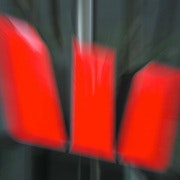Westpac's $2 billion invisible bank
"As technology becomes ubiquitous it also becomes invisible," wrote Wired magazine's founding executive editor Kevin Kelly in his 1998 book New Rules for the New Economy. The Westpac Group is now spending $2 billion on technology to create an invisible bank.
Not literally invisible, of course, but so all-pervasive and so seamlessly integrated with our everyday activities that we forget they're even there — unless something goes wrong.
Kelly uses the example of the electric motor. "In the early 1900s, at the heroic stage of the industrial economy, motors were changing the world," he wrote. "The 1918 edition of the Sears, Roebuck catalog featured the Home Motor — a five-pound electrical beast that would 'lighten the burden of the home'." The single Home Motor provided all the family's power needs through its many attachments: an egg beater, a fan, a mixer, a grinder, a buffer and soon.
But what actually happened is that electric motors became ever-smaller, lighter, cheaper and more common — so common that we forget they're in fans, clocks, water pumps, watches, refrigerators and many more places. Electric motors became invisible.
Computers and data networks are becoming invisible in just the same way. Trends including pervasive mobile data connectivity, a plethora of mobile devices, cloud computing and social media — trends we've been told about so many times they're almost cliché — are converging to a tipping point.
Many businesses still struggle to understand what's unfolding. Consumers are already there. They already stay in touch with friends and family from wherever they are, using whatever device is convenient to hand, for example, and they expect businesses to do the same.
"This convergence has radically shifted again the balance of power, placing the customer firmly at the centre of control," Westpac Group chief information officer Clive Whincup told the Trans-Tasman Business Circle in Sydney last week.
Banking customers now dictate how, when, and on what device they want to interact. They're as likely to ask their network of friends or even strangers for advice before even approaching the bank.
"[Banking] is no longer an intermittent, occasional interaction. It is a continuous, ongoing interaction on a day-by-day, and sometimes minute-by-minute basis... In the digital world, there is only now. If we can't follow our customers in the present, responding to their needs minute by minute, we risk obsolescence," he said.
"This is a game-changer for all organisations, not just banks."
Seeking simplicity
Westpac's survival strategy, which began to unfold in 2008 with a commitment of $2 billion, is to transforming itself through technology based on customer-centric design. In the face of complexity, they seek simplicity.
Their planning starts with the outcomes customers are after — dealing with day-to-day cashflows, saving for a holiday, buying a house, protecting an asset, building for retirement and so on. The bank is "radically simplifying" their products and processes to match, and aiming to provide "simple, personal and helpful customer solutions" wherever they're needed.
That's why Westpac built a native iPad app, and a native Windows 8 app that uses the tile-based interface style formerly known as Metro. A new online banking experience is coming "soon".
"It is their life which is being fuelled by the financial flows the bank provides," Whincup said. "Someone who chooses an Android phone, as opposed to an iPad, to do their banking on is making an emotional choice. It is the duty and responsibility of our technologists to design our interfaces around that choice."
Noting that customers' use of Visa's payWave system has "kicked off" in the last 12 to 18 months, Whincup said the next phases will include contactless technologies such as near field communication (NFC), and the mobile device will increasingly become the core of financial transaction .
"People no longer think about how they're going to pay. They automatically go to wave the card in front of the device. Once that happens, once that core customer behaviour changes, then the phenomenon takes shape by itself. And at that point, that inflection point, at which it becomes an embedded behaviour in the customer set, that we've got to make sure that we're at that point and dealing with the technology," he said.
"If they have to think about how they're going to pay, it's already a front-of-mind experience, and it's not going to happen."
















